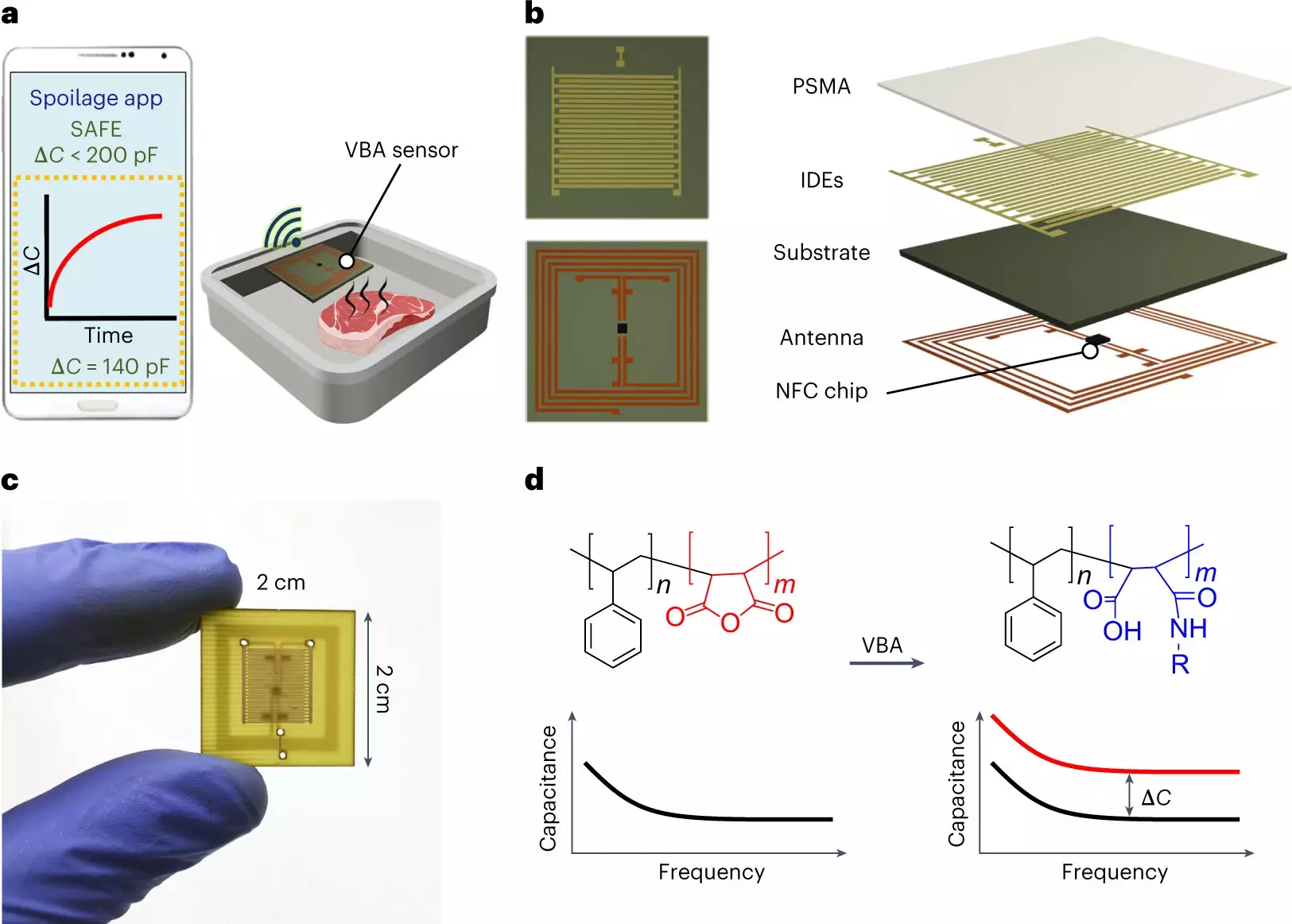Urban populations face critical issues of food waste and food-borne diseases, which contribute to greenhouse emissions and environmental costs. Food spoilage remains the primary cause of such waste. Therefore, it is essential to improve the processing, transportation, and preservation of food in line with current technological advancements.
Unfortunately, present monitoring processes are inefficient, expensive, and time-consuming, requiring expensive chromatographic devices and trained personnel. However, new research published in Nature Food presents a promising alternative: a miniature wireless sensor that can be applied directly to food and replace lab-monitoring.
The 2 x 2 cm device offers real-time measurement, is battery-free, and smartphone-compatible, providing a cost-effective and user-friendly solution. The sensor is expected to be highly effective in monitoring high-protein foods such as beef, chicken, and fish.
The research was led by Dr. Emin İstif (Molecular Biology and Genetics, Kadir Has University) and Asst. Prof. Levent Beker (Mechanical Engineering, Koç University), with contributions from Prof. İskender Yılgör and Dr. Emel Yılgör (Chemistry, Koç University), Asst. Prof. Çağdaş Dağ (Molecular Biology and Genetics, Koç University), and Asst Prof. Hatice Ceylan Koydemir (Texas A&M University).
Unlike existing solutions that focus on the color change of food, this new device offers a capacitive measurement method, utilizing near-field communication (NFC) technology with power-free, wireless communication. The authors indicate that this eliminates major disadvantages encountered in resistive devices, such as moisture sensitivity and incorrect data due to distance.
This invention provides companies with the opportunity to reduce costs while helping consumers. Once widely commercialized, the device will enable continuous monitoring on shelves, allowing users to control freshness right before buying a product or before consumption at home. On-demand spoilage analysis via mobile phones will ultimately help prevent food waste and food-borne diseases.
With its cost-effectiveness and accessibility, the authors hope to contribute to the greater struggle against global warming and greenhouse emissions more effectively and quickly. The next steps will focus on increasing the potential for commercialization of the product in the near future.



Leave a Reply